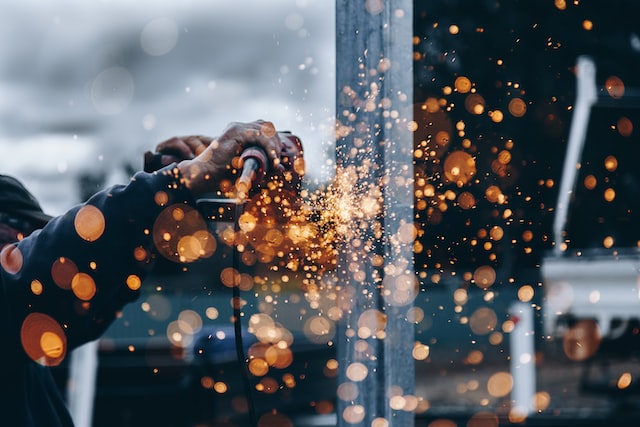Construction and manufacturing industries are critical to the economy, providing jobs and building the infrastructure and products we rely on. However, these industries also carry hidden dangers that workers must be aware of to protect their health and safety. This article will explore some hidden dangers of working in construction and manufacturing.
Risks You May Not Know About If You Work in Construction or Manufacturing
Chemical exposure
Workers in the construction and manufacturing industries are frequently exposed to toxic substances. These chemicals, such as lead, asbestos, benzene, and formaldehyde, may be present in building materials, paints, coatings, and other products used in these industries. Exposure to these toxic substances can have severe health consequences, such as an increased risk of common asbestos related diseases, respiratory problems, neurological disorders, and other health issues. As such, workers are recognizing their rights to pursue legal action and claim compensation for injuries sustained. For instance, asbestos compensation claims provide a means for affected workers to seek financial restitution and justice.
Falls
Working at heights is common in construction and manufacturing, and falls can be a serious risk. Falls can occur from ladders, scaffolds, roofs, and other elevated surfaces, often causing serious injuries or even death.
Machinery Accidents
Machinery such as saws, drills, and heavy equipment are used extensively in construction and manufacturing. Accidents can occur if workers are not properly trained or the equipment is not maintained regularly. Workers can suffer serious injuries such as amputations, fractures, and lacerations from machinery accidents.
Electrical hazards
Electrical hazards are a significant risk in the construction and manufacturing industries. Electrical wiring, equipment, and power tools can pose a risk of electrocution or electrical burns if workers come into contact with live electrical currents. To increase safety, it’s a good idea to install instrument transformers, as they can reduce the high voltage and current levels of the power system to levels that can be easily measured by standard instruments. You can reach out to ITEC (or a similar company) to find out more about these tools.
Heat stress
Construction and manufacturing work often involves long hours in hot and humid environments, which can lead to heat stress. Fatigue, cramping, dehydration, and potentially fatal heat stroke are among the symptoms of heat stress.
Repetitive Motion Injuries
Musculoskeletal ailments, including carpal tunnel syndrome, tendinitis, and back pain, are common among construction and industrial employees because of the repetitive nature of their job. Workers’ capacity to do their occupations may gradually deteriorate as a result of the debilitating effects of these injuries.
Long-term Health Risks for Construction and Manufacturing Workers
In addition to the immediate dangers of working in construction and manufacturing jobs, employees may also face long-term health risks. Potential effects on an employee’s health are listed below:
Hearing Loss
Construction and manufacturing workers may be exposed to loud noises, which can cause hearing loss over time. Workers who do not wear hearing protection are at higher risk.
Respiratory Problems
Workers in these industries may be exposed to dust, chemicals, and other substances that can cause respiratory problems over time. Long-term exposure to these substances can lead to serious lung diseases.
Musculoskeletal Disorders
Construction and manufacturing jobs may require workers to lift heavy objects or engage in repetitive motions, which can cause musculoskeletal disorders like carpal tunnel syndrome, tendonitis, and back pain.
Mental Health Problems
High levels of stress and the physical demands of the job can lead to mental health problems such as depression, anxiety, and post-traumatic stress disorder (PTSD).
Steps to Prevent Injuries and Health Risks in Construction and Manufacturing Jobs
A safe workplace is the responsibility of the employer. Here are some steps that employers can take to prevent injuries and health risks in construction and manufacturing jobs:
Provide Adequate Training
Employers are responsible for providing their staff with adequate training in the safe use of all equipment and machinery, as well as in the recognition and avoidance of hazardous items.
Use Protective Equipment
Every worker at the company has to have access to protective equipment, including full-face helmets, goggles, and earplugs. In addition, it is the duty of the employer to ensure that this equipment is properly maintained and, if required, replaced on a timely basis.
Encourage a Safety Culture
Companies have a responsibility to foster a culture of safety in which employees feel at ease raising concerns or reporting potential dangers. The significance of safety in the workplace may also be emphasized via the use of regular safety meetings and exercises.
Conclusion
In conclusion, working in construction and manufacturing carries hidden dangers that workers must be aware of to protect their health and safety. Chemical exposure, falls, machinery accidents, electrical hazards, heat stress, and repetitive motion injuries are just a few of the risks workers face in these industries. Proper training, appropriate safety equipment, and monitoring for signs of health problems can help workers stay safe and healthy on the job. With this in mind, employers must provide a safe workplace by eliminating known hazards and implementing reasonable preventative measures.

